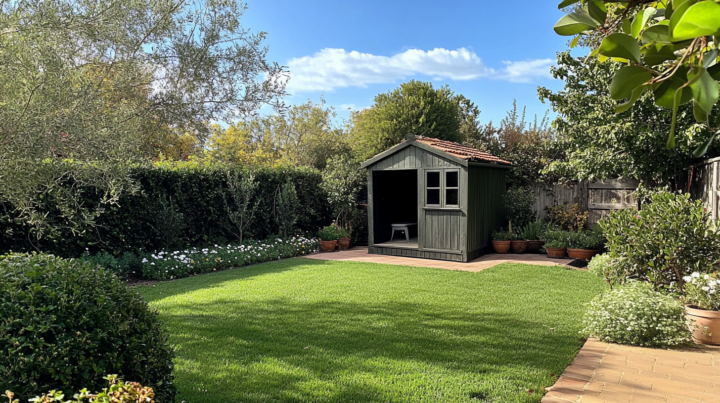The following contribution is from another author.
In an era where sustainability and eco-friendliness are becoming increasingly important, it’s no surprise that garden sheds are following this trend. While garden sheds were once primarily seen as simple storage spaces or places to escape the hustle and bustle of the house, they are now increasingly being designed with the future in mind. Sustainable materials, energy-efficient building techniques, and smart technologies play a significant role in this transformation. In this article, we’ll take you into the world of sustainable garden sheds and show you how to build a shed that is not only beautiful but also environmentally friendly.
Why sustainability matters
Sustainability is no longer just a buzzword; it’s a necessity. The construction sector is responsible for a significant portion of global CO2 emissions, and this applies to smaller construction projects like garden sheds as well. By choosing sustainable materials and building methods, you can significantly reduce the ecological footprint of your garden shed. Moreover, a sustainably built shed often results in lower energy costs in the long term, which is not only good for the environment but also for your wallet.
Sustainable materials for your garden shed
One of the first steps toward a sustainable garden shed is choosing the right materials. Traditionally, garden sheds are often built from wood, but not all types of wood are equally eco-friendly. It’s important to choose wood that comes from sustainably managed forests, such as wood with an FSC or PEFC certification. These certifications guarantee that the wood is harvested responsibly, without damaging the ecosystem.
In addition to wood, there are other sustainable materials you can consider for building your shed. Bamboo, for example, is a fast-growing and renewable material that is increasingly being used in construction. Recycled materials, such as recycled steel or plastic, can also be a good option. These materials reduce the demand for new raw materials, helping to minimize the environmental impact.
Energy-efficient designs
Another important aspect of a sustainable garden shed is its design. By designing smartly, you can significantly improve the energy efficiency of your shed. For example, consider the orientation of the shed. By positioning it to make optimal use of natural sunlight, you can reduce the need for artificial lighting and heating.
Additionally, good insulation is essential. A well-insulated shed keeps the heat inside during winter and the heat out during summer, reducing the need for energy for heating or air conditioning. There are various eco-friendly insulation materials available, such as sheep’s wool, cellulose, or hemp, which not only insulate well but also have a low ecological impact.
Smart technology for a sustainable garden shed
Integrating smart technology into garden sheds is another way to make them more sustainable. Think, for example, of smart thermostats that automatically adjust the temperature in the shed based on your usage patterns. This ensures that you never waste energy unnecessarily heating or cooling a space you’re not using.
Smart lighting can also contribute to the energy efficiency of your shed. By using LED lighting and motion sensors, you ensure that the lights are only on when needed. Additionally, with smart technologies like solar panels, you can generate your own energy, making your shed completely self-sufficient.
Examples of sustainable garden sheds
There are already several companies focusing on building sustainable garden sheds. Some good examples are the summer houses by Lugarde.com, known for its use of high-quality, sustainable materials and energy-efficient designs. These sheds are not only stylish and functional but also designed with minimal environmental impact in mind.
Moreover, more and more architects and designers are experimenting with innovative building techniques and materials to make garden sheds even more sustainable. Think, for example, of sheds made entirely from recycled materials or sheds designed to function completely off-grid, using solar energy and rainwater collection systems.
The future of sustainable garden sheds
The future of garden sheds looks promising. As the demand for sustainable living solutions continues to grow, garden sheds will increasingly be designed with sustainability in mind. We can expect even more innovative materials and technologies to become available in the future, making it even easier to build a sustainable shed.
Additionally, garden sheds are likely to become increasingly multifunctional. While they were once primarily used as storage spaces, we are already seeing them being converted into home offices, relaxation spaces, or even fully-fledged tiny houses. This trend is expected to continue, with garden sheds playing an increasingly important role in how we live and work.
















